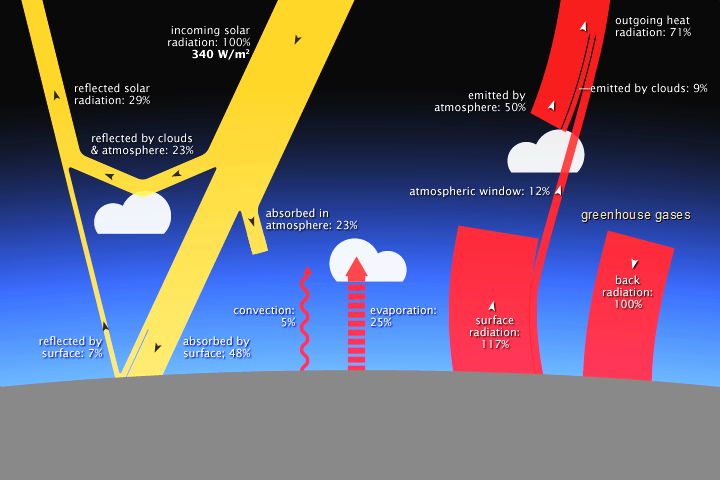What Do We Know?
Earth’s radiation balance is determined by energy entering and leaving the Earth system. Energy enters Earth’s climate system as sunlight, which consists mostly of IR radiation, visible light, and UV radiation. A portion of this radiation is reflected by the Earth, and the rest is absorbed. Some of the sunlight that is absorbed by the earth allows the surface of the planet to warm up. IR is then emitted from this warmed surface. Greenhouse gases absorb some of the IR radiation emitted by our planet as it travels through the atmosphere and back into space. As a result, some of the energy emitted by the Earth in the form of IR radiation is prevented from escaping into space. Therefore, greenhouse gases help warm Earth's climate by trapping a portion of the energy of outgoing IR radiation, keeping this energy in the climate system.

Your Turn
What is Earth's radiation balance? How do greenhouse gases influence Earth's radiation balance?
Earth's radiation balance is the balance between energy entering Earth's atmosphere and energy leaving Earth's atmosphere. Greenhouse gases affect the radiation balance by absorbing IR radiation emitted by the Earth. This decreases the amount of energy that is leaving Earth's atmosphere.